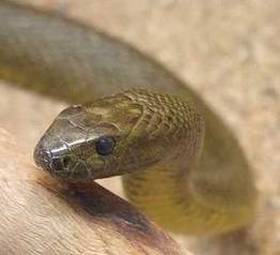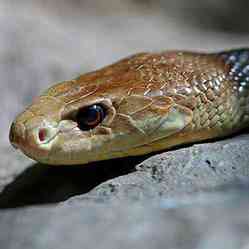Taipans - Most Venomous Snakes in the World |

Custom Search
|

Just one of the taipan species the coastal taipan, includes subspecies, 2 to be exact. Typically the taipans are believed to be probably the most venomous snake species known, especially the inland taipan.
The species common name, taipan, derives from the word used by the Wik-Mungkan Aboriginal people of central Cape York Peninsula, Queensland, Australia. The name was first used by Donald Thomson the Australian anthropologist and ornithologist known for its work with Aboriginal people. Taipan Species and Geographic Ranges The 3 known taipan snake species are: - Coastal taipan (Oxyuranus scutellatus) The coastal taipan is the only one with subspecies, the 2 subspecies are the coastal taipan (Oxyuranus scutellatus scutellatus), which is found along the northeastern coast of Queensland, and the Papuan taipan (Oxyuranus scutellatus canni), found on the southern coast of Papua New Guinea. - Inland taipan (Oxyuranus microlepidotus) The inland taipan snake is found in the semi-arid regions of central east Australia, the local aboriginal people named the snake Dandarabilla. The species was first described in 1879 by Frederick McCoy, but for the next 90 years, it became a bit of mystery until its rediscovery in 1972. - Central Ranges taipan (Oxyuranus temporalis) The Central Ranges taipan was found and described only in 2007 and it was the first new taipan species to be discovered in 125 years. It is found in the western desert regions of Australia. Taipan Diet
These snakes feed primarily on small mammals, especially mice, rats, and bandicoots. Taipan Venom The snakes of this genus possesses a highly neurotoxic venom with some other toxic ingredients that have multiple effects on their victims. The coastal taipan and the other taipan species are also capable of injecting large quantities of venom due to their fairly large size. Their venom is known to paralyze the victim's nervous system and also clot the blood, which then blocks blood vessels and uses up clotting factors. The taipans are considered to be among the most venomous land snakes based on their LD50 test results (an indicator of the venom toxicity on mice). In fact the inland taipan is considered by many to be the most venomous land snake or even the most venomous of all snakes, including sea snakes, depending on the source or study.
To further help building the taipan's fearsome reputation the coastal taipan, which is the largest Australian venomous snake, is also considered in many studies the 3rd most venomous land snake. The central ranges taipan the newest member of the genus, has been less researched than the other 2 older species, so it's venom exact toxicity is still unclear, but in fact it could be even more toxic and deadly than the venom produced by the other 2 taipan snake species. But apart from a venom's toxicity, the quantity of venom delivered in a snake bite and the type and size of the fangs, have also to be taken into account for measuring the potencial danger posed by that particular snake species. The taipans temperament also varies from one species to another, for instance, the coastal taipan can be quite aggressive if cornered and will actively defend itself while the inland taipan is generally shy and will flee preferring to avoid contact. In 1950, Kevin Budden, who was an amateur herpetologist, was among the first people to capture a taipan snake alive, but he was bitten in capture process and died in the following day. The snake, an inland taipan, which eventually died a few weeks later, was milked by a Melbourne zoologist and its venom was used to develop the anti-venom, which became available only 5 years later in 1955. |
Did You Know?
The Mojave rattlesnake venom is considered the most toxic of any rattlesnake because of their "Mojave toxin". Scientific classification |
© 2014 Snake Facts About Us | Privacy Policy | Contact







